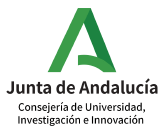

Few protocols are currently available to drive farmed fish development toward desired phenotypes. This is partially because programming is often achieved through epigenetic mechanisms and interventions have been attempted without information on the epigenetic regulators (EpiRegs) that ultimately transfer the environmental information to the genome.
EpiTool4Fish will use one of the most important farmed fish (Sparus aurata) in Andalucía and in Europe as model animal to fulfill this knowledge gap, by developing a gene expression array for EpiRegs, and will validate it in two key organs for productive traits: pituitary and liver. Moreover, it will be used to describe variations in EpiRegs through development. It is hypothesized that the use this qPCR array allows a better understanding of the susceptibility of the fish to nutritional and other interventions for reprogramming its epigenome and, ultimately, particular productive traits. Thus, the overall objective of the proposal is to develop and validate a qPCR array for EpiRegs in the gilthead seabream.
The work-flow will contemplate 1) search EpiRegs in seabream genome, 2) design qPCR primers for selected genes, evaluate them for specificity and efficiency, and design a qPCR array in 96-wells format, 3) validate the qPCR array by conventional qPCR and prove its value in samples already available from our ongoing project (BreamEpiMap), and 4) use the array to describe for the first time the ontogenetic variations in EpiRegs through larval development in seabream.
The project will make available a new tool for the study of EpiRegs in seabream expanding the reach of previous research, while will support new studies to manage the phenotype through epigenetics in a fish of high economic value for the Andalusian, Spanish, and European aquaculture. Finally, results will promote future national and international collaborations.

The overall objective of the proposal is to develop and validate a qPCR array for epigenetic regulators in the gilthead seabream.
Specific objective 1) To search in seabream genome database genes related with epigenetic regulation.
Specific objective 2) To design qPCR primers for selected genes, evaluate them for specificity and efficiency, and design a qPCR array.
Specific objective 3) To technically validate the qPCR array and prove its value in samples from previous experiments.
Specific objective 4) To describe the ontogenetic variations in EpiRegs through larval development in seabream.

Bioinformatic work, genome survey, primer design.
Primers optimization and step by step assembly of the array.
Validation of the array.
Variations in DNA methylation by microscopy in larvae of fish and correlation with the array results.
Disemination of resulst in conferences, scientific publication and to the general public.
Continuous economic and scientific managementb of the project.

Specific objective 1) It is expected to identify in the seabream genome a wide set (more than 100, including paralogs) of EpiRegs.
Specific objective 2) It is expected that up to 80 genes conform the requirements of specificity and amplification efficiency to be included in array.
Specific objective 3) It is expected that the qPCR array results could be technically validated with the same samples used for its development, and functionally validated (usefulness) by correlating overall results with the DNA methylation level in samples from ongoing projects. It is expected that, beyond the technical and functional validation of the array, results obtained during the process significantly expand the reach of previous research.
Specific objective 4) It is expected that the qPCR array allows the description of ontogenetic variations in main EpiRegs in seabream larvae.







